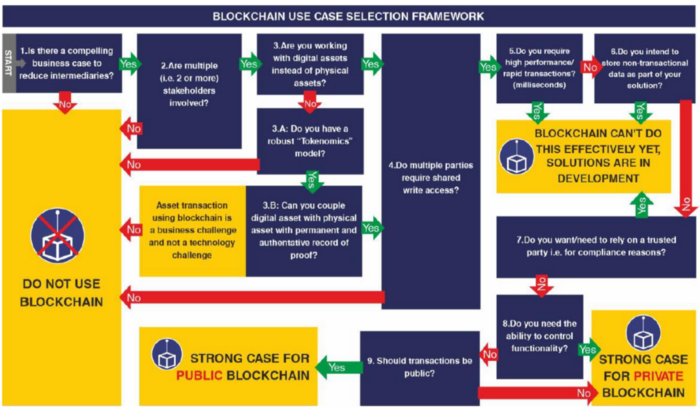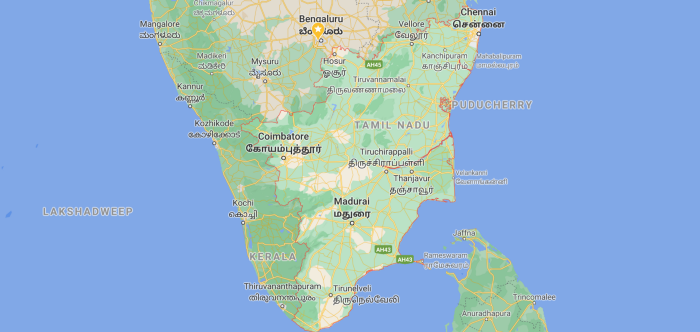The Blockchain Necessity Framework

Blockchain has been positioned as a revolutionary new technology, the much needed ‘silver bullet’ that can address all business and governance processes. While the promise and potential of blockchain are undoubtedly transformative, what hasn’t helped this technology, that is still in the nascence of its evolution, has been the massive hype and the irrational exuberance promulgated by a bevvy of ‘Blockchain Evangelists’. With survey results such as “more than 80% of business executives say their organisations are actively involved with blockchain” (without explaining what this involvement entails and what has been the success so far), it isn’t difficult to fathom why so many institutions, government agencies and businesses across the globe have pursued blockchain pilots and proof-of-concept (POC) projects, often with an unclear picture of what the scope or the success of such projects would look like.
Blockchain can be leveraged to develop new solutions to re-engineer processes i.e. create new operating and business models, and not necessarily be seen as a novel approach to build new solutions (e.g. democratise quality cancer diagnosis across India through advanced AI radionics solutions). While strong enthusiasm for exploring blockchain for improving business capabilities is much needed, learnings from these several pilots and PoCs pursued so far should be factored in.
The blockchain use Case selection framework

The features of blockchain make it favourable in processes requiring decentralized access, auditability, security, disintermediation, and programmability. While alternatives such as distributed databases, or centralized databases with distributed API access may also solve specific issues in processes at a lower cost, blockchain has the potential to solve these problems simultaneously.
Several frameworks have been proposed in the recent past to evaluate the applicability of blockchain based solution. Based on our analysis, the framework suggested by WEF was found to be most intuitive. This paper proposes a framework to evaluate the efficacy of using blockchain for use cases, and is an adaptation of the WEF model, with modifications based on the learnings from the studies and initiatives pursued at NITI Aayog.
The online digital wallet has a software component that enables security and encryption. The platform has easy access features for storing user data, transaction details and payment options.
The need to reduce intermediaries
The foremost requirement for a blockchain based solution to be appropriate is the need for reducing intermediaries (entities/brokers/processes) etc. If it is cheaper, faster and more efficient to collaborate directly with counterparties e.g. forward transactions between trusted parties in financial markets, blockchain solutions are not suited.
It is worth noting that blockchain solutions will not necessarily lead to disintermediation i.e. removal of intermediaries but reduction of intermediaries. The majority of viable use cases for blockchain will be permissioned ones, not public blockchains. “Public blockchains, like Bitcoin, have no central authority and are regarded as enablers of total disruptive disintermediation. Permissioned blockchains are hosted on private computing networks, with controlled access and editing rights i.e. there are still central authorities with admin rights8.”
However, once allowed on the permissioned network, the parties can execute peer-to-peer transactions without the need of a central authority
Multi-stakeholder environment
The power of blockchain solutions is to act as a source of trust, transparency and auditability, and hence are suited for process flows with multiple entities.
Digitally native assets
For blockchain solutions to be successfully applied, there is a need for assets that can be successfully represented in a digital format. “If an asset has a physical representation that can change the form, then it is difficult to effectively manage that asset on a blockchain. An example of this is tracking and tracing farm produce on blockchain — if a company wishes to track and trace wheat across the entire supply chain as it becomes bread, it is difficult to use blockchain to manage its transition from wheat, to flour, to bread.9”
Permanent and authoritative proof of record
The need for creating a permanent trusted digital record for the asset can’t be emphasized enough. One of the key features of blockchain is the immutability i.e. irreversible representation of the state of an object. If consensus can’t be reached on the state of the object/transaction through trusted sources i.e. disputed land records, a block representation of that object/transaction is not feasible.
Share write access
If multiple parties do not need to update the records, a central repository with multiple real-time read-only instances make more sense than a blockchain based solution.
Low transaction volume
Despite the recent technological advances, blockchain technology still has limited processing power, which makes it difficult to perform a large number of transactions simultaneously. To put in context, the most commonly used blockchain platform, Ethereum is striving to reach 3,000 transactions per second from the current level of a few hundred transactions per second. Compare this to a real time payments system e.g. Visa which is capable of processing more than 50,000 transactions per second. While permissioned blockchains can handle more volume than public blockchains, the limitations of processing time still remain.
Non-transactional data
Blockchain shouldn’t be seen as an alternative to databases and shouldn’t be used for storing private/proprietary information. It is best suited for transaction records.
Reliance on trusted third parties
If a process flow has specific requirements on the use of intermediaries / trusted partners/regulators, then it may be complicated to deploy blockchain. In such cases, it may become necessary to include regulators etc. in the project and deliver means by which the regulators can ensure compliance with laws.
Controlling functionality
If the ability to change the functionality on a blockchain (e.g., node distribution, permissioning, engagement rules, etc.) without having a detailed discussion across the large open-source forums for blockchain is desirable, then a permissioned blockchain is more suitable.

Summary
‘Blockchain’ has emerged to become a potentially transformative force in multiple aspects of government and private sector operations. Its potential has been recognized globally, with a variety of international organizations and technology companies highlighting the benefits of its application in reducing costs of operation and compliance, as well as in improving efficiencies .
Read More Blogs
Tamil Nadu Blockchain Policy 2020
Blockchain Technology will play a huge role in e-Governance in the near future...
Learn MoreBlockchain India Policy
A Blockchain is a growing list of records, called blocks, that are linked using cryptography...
Learn More
